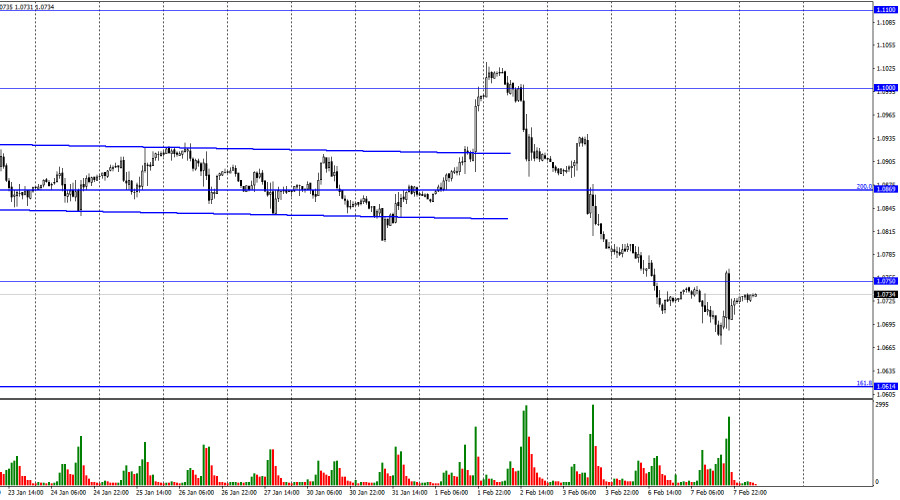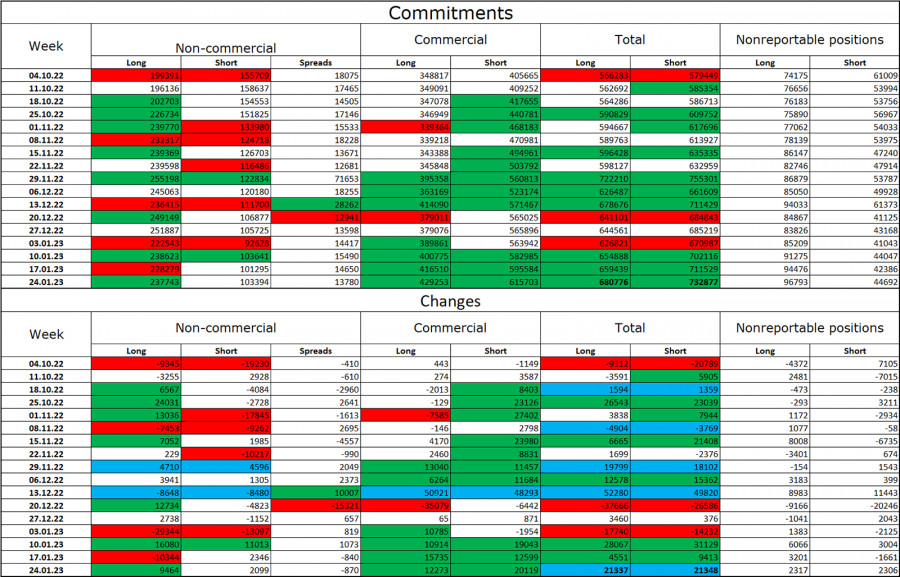

I can point to two things that happened yesterday that were extremely fascinating. These are Joachim Nagel and Jerome Powell's performances. Powell's speech will be covered in an article on the pound-dollar, while I will concentrate more on the second. According to Nagel, a member of the ECB governing Council, the present rate has not yet reached a restrictive level. The pace at which the economy starts to contract, business activity declines, unemployment rises, and labor market contracts are known as the restrictive level. The consumer price index is also declining at the same time, which is exactly what the ECB wants for the upcoming year or two. If you accept Nagel's assertions, the ECB rate will increase throughout this year, not only twice in March and April. Since inflation is still high, it seems likely that we will discuss at least 4 increases. This feature is advantageous for the euro and creates promising opportunities for 2023. The Fed rate won't be able to see a comparable increase because it is getting close to its maximum. Due to the strong sell signal on the 4-hour chart, the European is currently falling and may continue to do so for several months. But as the year progresses, the euro may once more overtake the dollar as the dominant currency. In particular, it would be useless for the Fed to tighten its rate more if US inflation continued to decrease at the current rate.

The pair is still declining on the 4-hour chart and has managed to stay under the upward trend corridor. Since the pair left the corridor where they had been since October, I believe this moment to be of utmost importance. The current "bearish" trading sentiment offers the US dollar good growth chances with targets of 1.0610 and 1.0201. Emerging divergences are currently undetectable in any indication.
Report on Commitments of Traders (COT):

Speculators opened 9,464 long contracts and 2,099 short contracts during the most recent reporting week. Major traders' attitude is still "bullish" and has somewhat improved. Currently, 238 thousand long futures and 103 thousand short contracts are all concentrated in the hands of traders. The COT figures show that the European currency is now rising, but I also see that the number of Long positions is over 2.5 times greater than the number of Short positions. The likelihood of the euro currency's growth has been steadily increasing over the past few months, much like the euro itself, but the information background hasn't always backed it up. After a protracted "dark time," the situation is still favorable for the euro, therefore its prospects are still good. Until the ECB gradually raises the interest rate by increments of 0.50%, at least.
United States and European Union news calendars:
There are no noteworthy events scheduled for February 8 in either the economic calendars for the US or the EU. Today's traders won't be affected by the information background's sentiment.
Forecast for EUR/USD and trading advice:
On a 4-hour chart, I suggested selling the pair when it closed below the corridor. The targets are 1.0614 and 1.0750. The initial target has been accomplished, thus the transactions can now be maintained open. On the 4-hour chart, purchases of the euro currency are conceivable when it recovers from the level of 1.0610 with a target of 1.0750. Or when the price is anchored above 1.0750 with a target of 1.0869 on the hourly chart.